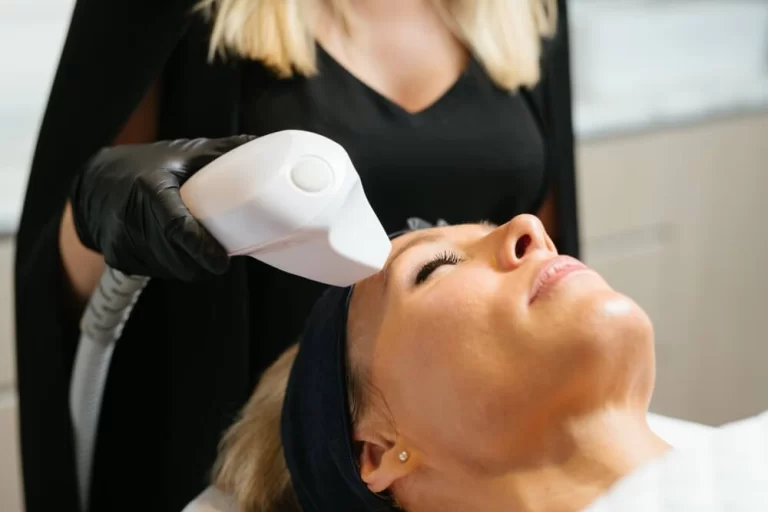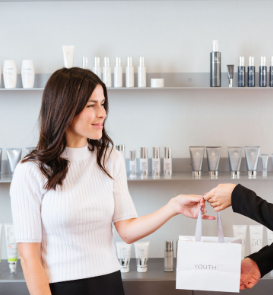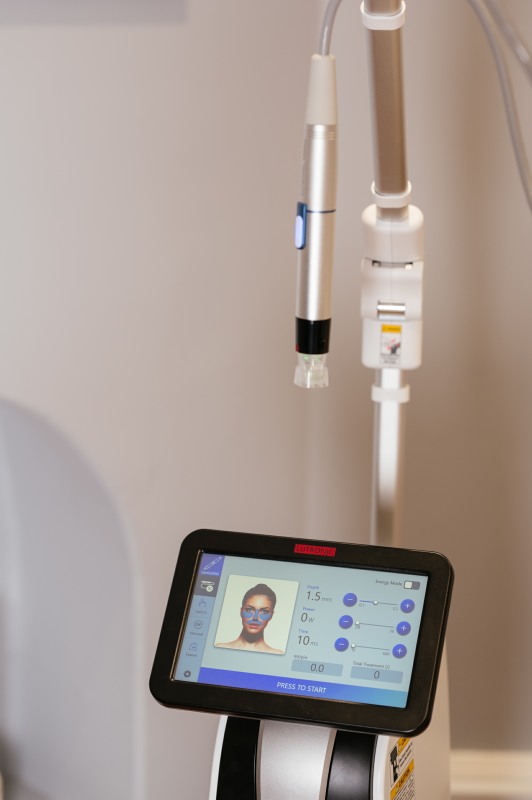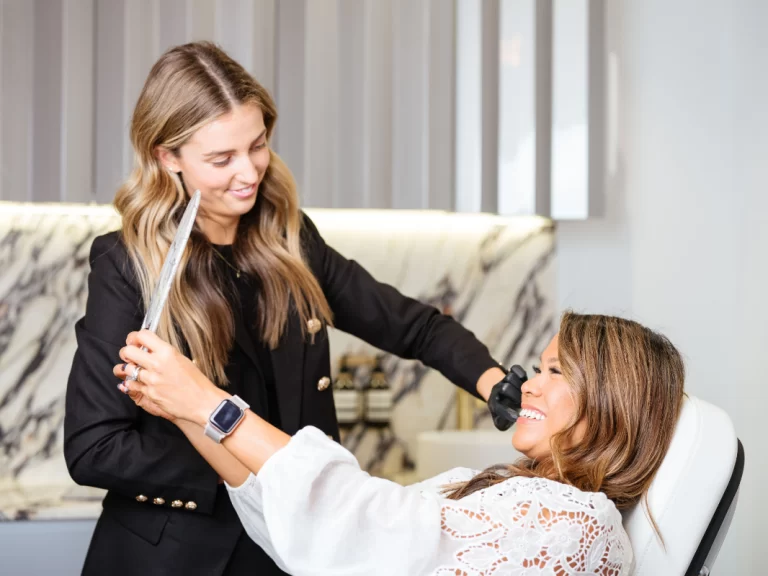RF Fractional Skin Resurfacing (FSR) Aftercare

Thank you for attending Youth Lab for FSR (Fractional Skin Resurfacing) . Please take the time to carefully read your post-treatment instructions below.
POST-TREATMENT INSTRUCTIONS
- Use only gentle cleansers, hyaluronic acid/hydrating or healing serums, gentle moisturisers, and SPF 30+ daily for 7 days. The use of the YL Aftercare kit is highly encouraged for optimal healing.
- Avoid any heat or sweat inducing activities, including vigorous exercise for 24-48hrs.
- Avoid applying makeup over the treated areas for 24-48 hours, mineral makeups are preferred.
- Avoid swimming pools, spas, hot tubs, saunas and ocean water for 72 hours.
- Do not use fake tan or spray tan for 7 days.
- Do not use any AHA or BHA, exfoliants or acidic based products for 7 days (eg Glycolic, Lactic, Salicylic etc) – gentle exfoliation may be used after this time.
- Do not use Vitamin A/Retinol products for 7 days (eg Retin A, Stieva A, Zorac etc)
- Strictly avoid sun exposure for 14 days. The treated area is more prone to sunburn and pigmentation change. Delayed blistering secondary to sun exposure has been noted up to 72 hours post-treatment.
- Do not shave the area until sensitivity has subsided.
- Do not pick, pull or scratch the treated skin. This can lead to scarring, infection and pigment changes.
- Do not apply any occlusive coverings to the skin.
- Avoid smoking/vaping for a minimum of 14 days. Smokers generally experience poorer healing and suboptimal results so cessation is recommended.
WHAT TO EXPECT
The listed below are all normal side effects and should self-resolve within a few days up to weeks.
- Swelling (mild to severe)
- Redness
- Itching
- Rash
- Discomfort
- Gridding of the skin / track marks
- Post Inflammatory Hyperpigmentation/Hypopigmentation (PIH)
- Purging / Breakouts
More severe complications may include:
- Itching or a rash that intensifies and is not resolved with antihistamines.
- Bacterial Infection / HSV (cold sore) outbreak. Including; fevers, development of pus/oozing, worsening raised rashes.
- Blistering or broken skin or wounds. Please contact the clinic immediately for appropriate management.. Keep the affected area moist and avoid direct sunlight.
- Possible allergic reaction
If you experience any of the above severe complications, please contact the clinic on hello@youthlab.com.au or; (08) 9324 1604 (West Perth), (08) 9260 6800 (Claremont), (08) 9260 6880 (Joondalup) or (08) 9260 6820 (Applecross) so we can arrange to examine the skin to ensure healing is adequate.
For further information on how to manage these side effects, please see ‘Management’.
MANAGEMENT
Cold Sores
Cold Sore (HSV) outbreak in individuals who are susceptible is possible even for those who have not had an outbreak in a long time.
Cold Sore Relief
- It is recommended these individuals take prophylactic antiviral medication available over the counter from their local pharmacy prior to and post-treatment.
Redness
Redness in the area of treatment is expected and can be combined with feeling hot and sensitive like a sunburn. This may last several hours or days, depending on the selected treatment. Corrective treatments are more likely to result in longer-lasting, temporary erythema which can last months.
Redness relief
- Keep the area cool / apply a cool compress.
- You may use mineral make-up on the next day following the treatment if the skin remains intact or until sensitivity has subsided.
Swelling
Swelling of the treated area is expected. The severity of swelling will vary from client to client and can range from minimal to severe.
Those prone to asthma, allergies, increased sensitivities or taking certain medications may be more likely to experience significant swelling post-treatment. Swelling is temporary and often will generally subside within 1-10 days.
Swelling Relief
- Apply a cool compress to the area for 10 minutes every hour on treatment day.
- Take an antihistamine (e.g. 10mg loratadine)
- Try sleeping on your back, slightly elevated, to prevent pressure build-up on the face
Urticaria
In rare cases, hives have been reported after FSR treatments. If you experience an irritated raised rash after treatment contact the clinic. Antihistamines may be taken to help relieve the itchiness.
Urticaria, itching or hive-like appearance, is associated with the thermal light affecting the surrounding skin. This will subside within a few hours to days.
Urticaria Relief
- Take an antihistamine (e.g. 10mg loratadine)
Micro-crusting, gridding or stamping
Micro-crusting, gridding or stamping will appear and can last days up to several weeks according to the areas treated. This will initially look like little dots (sometimes brown or black) on the skin or have the texture of sandpaper. Slower shedding of micro crusts, gridding or sandpaper texture is noted in areas around the eyes, neck and decolletage but will subside with time.
If crusts appear following the treatment, do not peel or scratch them. Be gentle and treat the area with care. Picking and scratching of the skin can lead to infection, scarring and pigment changes. It is imperative that you treat the skin with care.
Avoid shaving the area until the small crusts peel off.
Micro-Crusting Relief
- This will self-resolve. No management is required.
- You may gently exfoliate the skin after 7 days
Blisters, wounds and Post Inflammatory Hyperpigmentation
If the skin is broken or a wound or blister appears, contact the clinic immediately.
Keep the affected area moist and avoid direct sunlight. Delayed blistering secondary to sun exposure has been noted up to 72 hours post-treatment.
Strictly avoid any sun exposure to the treated area for a minimum of 14 days after the procedure. The controlled damage in the epidermal layer reduces the skin’s natural defence mechanisms and may cause post-inflammatory hyperpigmentation and as a result, the treated area is more prone to sunburn and pigmentation change.
Picking and scratching the skin, or exfoliating scabs can result in slow healing and increases the risk of injection and pigment changes.
Blisters/wounds Relief
- An antibiotic cream may be advised by your practitioner if required.
- Protective ointments and repair cream, advised specifically by your practitioner, are to be used for comfort and healing. These can be obtained during your follow up.
- Avoid sun exposure. Keep the area covered and use SPF 50+.
- Avoid any excessive heat such as steam as this may also stimulate an inflammatory response.
FAQs
How long until I see results?
Results of the FSR treatment may start to become evident in a few days with improvements in skin texture, pore size, finer lines and pigmentation emerging within the first seven to fourteen days. Deeper changes related to collagen production such as deeper lines and wrinkles, firming, lifting and scars become visible over the next 3 months.
Many people get noticeable improvements for mild superficial concerns after a single session, however, consecutive treatments are required to target concerns such as deeper lines, wrinkles, lifting and contouring, scars and enlarged pores and encourage optimal collagen production to adequately treat your concerns. Usually a course of three to six treatments are required, for some conditions more may be required.
Every client is different and factors such as age, skin conditions, lifestyle factors and use of home care will affect the results.
Smokers will generally experience poorer healing and suboptimal results so cessation is recommended.
How long will results last?
The results of fractional skin resurfacing are long lasting as the treatment stimulates the body’s natural collagen and elastin production. Once full and optimal results are achieved collagen stimulation will continue for up to 6 months. The skin will continue to age with natural collagen depletion over time so maintenance treatments may be required.
When should I get another treatment?
Treatments may be performed every four to eight weeks depending on the intensity of your treatments and concerns or conditions being targeted, you will be guided by your practitioner’s recommendations.
Maintenance treatments can be discussed as required with your practitioner.
Usually a course of three to six treatments are required, for some conditions more may be required. We can often alternate treatments with our other RF treatments such as the Intensif, Skin Tightening and Contouring treatments for optimal results.
Your practitioner will advise you of the best treatment plan and determine the number of treatments you may require.
Please contact the clinic on (08) 9324 1604 (West Perth), (08) 9260 6800 (Claremont), (08) 9260 6880 (Joondalup) or (08) 9260 6820 (Applecross) if you have any questions about your treatment or aftercare instructions.



